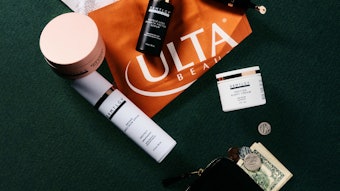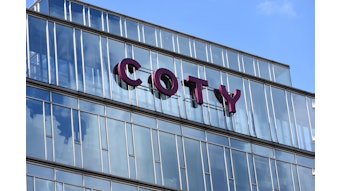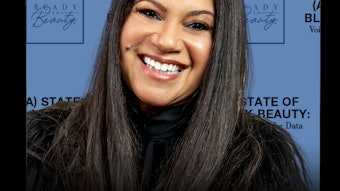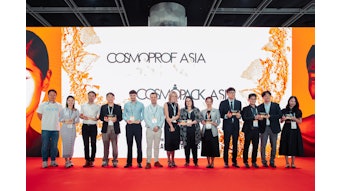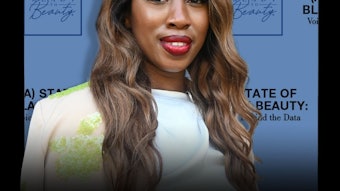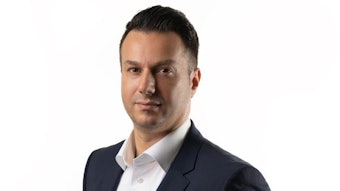The word ‘cosmetics’ finds its origin in the greek kosmētikos, which literally translates to “skilled in ordering or arranging.” If you have ever witnessed how a thoughtful makeover delivers a dramatic transformation, you know the root definition of being “skilled” is apropos. While the sharing of skilled beauty techniques is a millennia-old communal tradition, it is now a tradition experiencing a makeover of its own. New combinations of online retail and social media are redefining collaboration in beauty and cosmetics. And one brand that is wholeheartedly embracing this social commerce trend—and is reaping rewards for it—is Laura Geller Beauty.
Even before the Internet’s advent, Laura Geller Beauty recognized the central role community has within the consumer beauty and cosmetics industry. Company founder Laura Geller was a renowned makeup artist on Broadway for years before opening a makeup studio in 1993 on the Upper East Side of Manhattan. By 2002, the growing fan base enabled the eponymous beauty brand to launch sales on QVC. Shopping via television provided a novel way to share beauty secrets that used to require a trip to a local studio or direct access to a makeup artist.
This approach was no coincidence. As founder, Laura Geller consistently maintained that beauty should be more welcoming and accessible to all women. The combination of that philosophy and the broad reach of QVC helped organically grow a group of brand fans called “Geller Girls.” The cornerstone of this community centers on the open sharing of beauty techniques that are amazingly specialized according to complexion, age, ethnicity and other factors. This emphasis on sharing best practices has proved important, as it was the catalyst that ultimately led Laura Geller Beauty to explore more innovative approaches to online sales.
Online Collaboration Challenges
The evolution of e-commerce for the Laura Geller Beauty brand mirrors the experience of many current beauty retail efforts. When the online team established its first fully transactional commerce site in 2008, it was state-of-the-art for the time, but still couldn’t facilitate the social interactions consumers loved in their local shops or studios. Like all sites then (and even most today), the site focused on providing a rich catalog of product images and descriptions coupled with necessary commerce and order fulfillment functions. Given the nature of commerce technology at the time, the shopping experience was solitary and couldn’t fully harness the rich knowledge within the Geller Girl community.
Years later, the arrival of social media provided a new option for social collaboration for those consumers willing to chat about beauty needs in an open setting. This led Laura Geller Beauty’s online team to conduct in-depth discussions of how these new “off-site but online” channels might be best leveraged to recreate the social interactions found in stores. The conclusion, now realized by most retailers, was that social media was a great platform to build awareness—but that, not surprisingly, didn’t translate into discernible sales. It’s culturally awkward to promote and sell in an environment purposely designed for relaxed socialization (just imagine having an insurance salesman at your next cocktail party). Indeed, surveys have since proven out the team’s early thinking. Just 2% of Facebook’s 1.5 billion users have ever made a purchase for any retailer through the social network. The arrival of Twitter, YouTube, Instagram and other social channels (following Facebook) didn’t provide the online team the means to support the needs of the Geller Girl community either. In fact, an only wider range of collaboration options for consumers seemed confusing. In addition, being so removed from the online catalog showed coupling beauty tips and the correct shade or product variant with any accuracy was very difficult.
The Beauty of Social Shopping
During a site redesign project in 2012, the Laura Geller Beauty team set out to develop a new approach to online sales that relied on a few guiding principles. The team knew one of a woman’s most valued beauty resources is her friends and peer group. And with an ever-growing array of options for off-site social interactions, Laura Geller Beauty wanted to provide its consumers with a centralized approach to social, one that better leveraged the power of community. Embedding social interactions directly in the site made the most sense so purchase affirmations could be acted on instantly, but that wasn’t conventional wisdom at the time.
Most beauty brands and retailers were using Facebook commerce apps to create satellite versions of their stores off-site, or they were attempting to sell within Pinterest, Twitter or other networks. It was during this time that the Laura Geller Beauty team connected with social e-commerce start-up Blucarat, which espoused just the opposite approach. Rather than forcing shopping into the growing number of social channels, the beauty brand could host social interactions directly within its own retail site. Blucarat’s cloud-based solution was a simple implementation—activated by embedding JavaScript into web pages in the same way Google Analytics or other website-monitoring solutions work. With the Blucarat code in place, all visitors to the site were presented with an opt-in social bar that appeared as a navigational aid at the base of the site so it didn’t overlap with the site functions. Working with Blucarat, the Laura Geller Beauty team stylized the social bar to match brand guidelines and overall site design, eventually promoting it as the “Laura Geller Beauty Bar.”
This early version of the software quickly created a shopping community that was ideal for the loyal Laura Geller Beauty fanbase. Shoppers logged into the social bar using Facebook authentication, but because all interactions remained within the Laura Geller Beauty site itself, it offered a more private and intimate setting than any large social network. In essence, the Blucarat software created a forum where shoppers could pose questions or comments to brand-designated experts, selected friends or for all shoppers to respond to. At the same time, shoppers had a new way to browse products by seeing which were most viewed, purchased or commented on.
To ensure community advice connected to the correct corresponding products, every question, comment and post was automatically infused with a thumbnail link to the corresponding product detail page. Using this approach and storing the interactions meant the cumulative knowledge of the Laura Geller Beauty shopping community was always on tap for future shoppers.
In the year Laura Geller Beauty used the initial version of Blucarat on its site, the community feedback and consumer engagement metrics demonstrated the Laura Geller Beauty online team’s initial design principles were correct. Shoppers that used the Beauty Bar spent 150% more time on the site (over 10 minutes per session) compared to those that didn’t interact socially (four minutes). Similarly, the number of product pages viewed by visitors increased by 50%. The increased time spent on site along with more product views also helped increase revenue.
Additionally, shoppers that used the Beauty Bar had twice the conversion rate when compared to those that didn’t. And in those initial months, thousands of consumers registered to use the Beauty Bar, generating thousands of questions, comments and responses that has created a rich repository of information for future shoppers.
Cosmetic Collaboration Goes Visual
A year following its Beauty Bar launch on www.laurageller.com, the Blucarat team further enhanced its software to provide Laura Geller Beauty with new options for social interaction. Where the initial version focused on creating a forum that instigated discussions directly on the site, the newer version built upon this foundation by adding the ability to ingest content from various off-site social channels. This change meant the thousands of pictures, videos and comments scattered across Instagram, YouTube, Twitter and other networks could now be integrated into the shopping experience. Shoppers enjoyed the same forum-based discussions Blucarat featured in the debut version along with the added “social discovery” function. Products were now accompanied with a list of social influencers: how many times they had been viewed, which Facebook friends liked the product, social comments about the item, and even fan photos contributed to Instagram or other networks. That introduction of fan-based pictures and video was arguably the best aspect of the new approach. Knowing the value of cosmetics and beauty techniques are based on the appearances they enable, Blucarat devised a way to showcase real customer pictures that were accurately linked to the corresponding products that made the looks possible. Using new image galleries coupled with established forum-based discussions, consumers could now share real-world pictures revealing how specific product combinations worked for their unique beauty looks and situations.
In the first month of deployment for the updated Beauty Bar, the teams saw good engagement metrics. Average time on site for Beauty Bar users increased to over 13 minutes (in comparison, Nielsen estimates the average time spent on a webpage is approximately one minute). Socially engaged users viewed twice the number of pages than those not using social features, and, once again, conversion rates for those using the social bar were double that of those not socially engaged.
Evolved Consumer Engagements
Newly appointed Laura Geller Beauty CEO Elana Drell-Szyfer appreciates what the combination of a loyal fanbase and new technologies can mean for the beauty brand. “The company has always been dedicated to creating makeup that is inviting and easy to use for real women,” she says. “We can now expand our vision through technological innovations unimaginable when this company was founded. Our consumers can connect directly with us and with each other in a way that reflects our brand’s open spirit.”
That interaction delivers more frequent and meaningful consumer engagements, and it also has an additional benefit of serving as a listening platform. Increased social interaction on the Laura Geller Beauty site provides both quantitative analytics about shopping behavior along with a qualitative sense of shopper sentiment. “The new Blucarat partnership means we have near immediate feedback regarding our products,” says Drell-Szyfer. “Our site isn’t merely an online store—it’s become a worldwide focus group that delivers fantastic insight into what works best for our consumers. It’s exciting stuff.”
